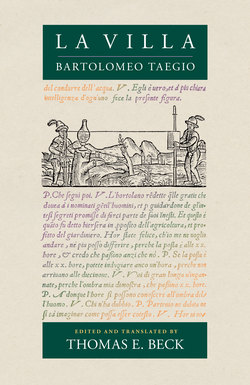La Villa

Реклама. ООО «ЛитРес», ИНН: 7719571260.
Оглавление
Bartolomeo Taegio. La Villa
Отрывок из книги
LA VILLA
John Dixon Hunt, Series Editor
.....
The Idea of the Villa in the Renaissance
As the Roman Empire disintegrated, the ideological as well as the practical need for villas waned. As urban populations shrank, much of the countryside of Italy was taken out of cultivation, and became economically and politically isolated from cities. Villas ceased to be centers of economic and administrative life, and many of their structures were either neglected or adapted for other uses. While people may have continued to live on country estates throughout the former empire, the construction of new villas and the production of writing on the idea of the villa both eventually stopped. The “process of disaggregation of the agricultural landscape and the separation of the city from the countryside” reached its peak between the eighth and eleventh centuries.140 By the thirteenth century, following an increase in population, the elaboration of the agricultural landscape began to develop again under new conditions. At the beginning of the fourteenth century Crescenzi wrote his Liber ruralium commodorum using Cato, Varro, and Columella as sources.141 Crescenzi’s agricultural treatise does not deal with the idea of the villa. Rather, “it gives a complete picture by a cultured observer, of the medieval garden at its most expansive, before the onset of the Renaissance.”142 The buildings Crescenzi described in his text are essentially fortified castles, which were built all over Italy before the fifteenth century.
.....